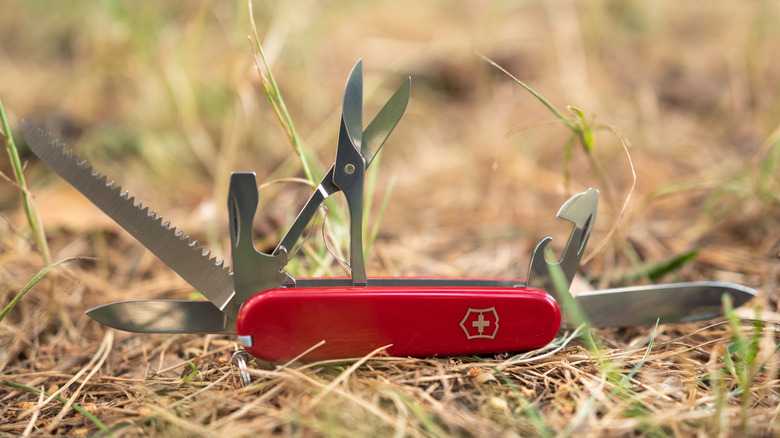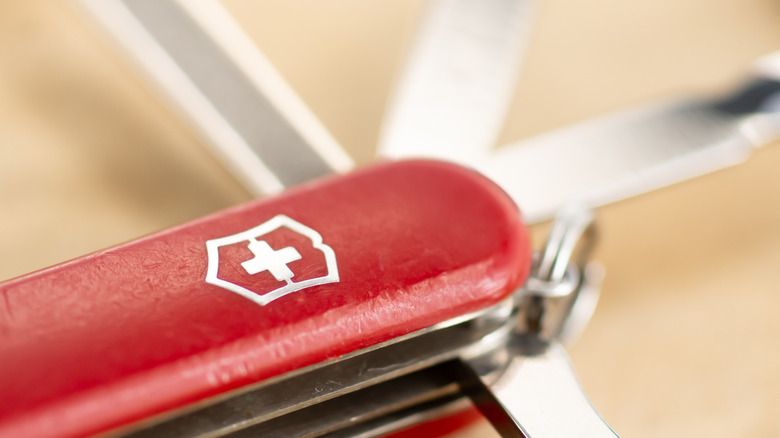Can You Put A Swiss Army Knife In The Dishwasher?
Over the decades, Swiss Army Knives have evolved into some of the most recognizable and trustworthy tools on the market. It's easy to see why, as these handy tools have no shortage of functions. From cutting rope to prying open cans to skinning fish and countless other actions you may have never considered, your Swiss Army Knife may end up being just as busy as you throughout the day.
As your Swiss Army Knife's arsenal of tools and blades continues to interact with food, liquids, and debris, it will naturally accumulate gunk and buildup. Cleaning it is essential to maintaining both the appearance and performance of your tool. You might think the simplest way to accomplish this would be to throw the Swiss Army Knife into the dishwasher and call it a day. However, the same logic that applies to your plate covered in lasagna residue won't fly with your tool.
The strength that makes dishwashers so effective at cleaning is also what makes them harmful to Swiss Army Knives. The combination of a dishwasher's extremely high temperatures and the harsh cleaning products commonly used in them can damage your Swiss Army Knife and its mechanisms. So, unless you want your tool to die out on you unexpectedly, avoid putting your Swiss Army Knife in the dishwasher at all costs.
How to properly clean your Swiss Army Knife
So, if you can't put your Swiss Army Knife in the dishwasher to clean it, does that mean you can't clean it? Of course, your Swiss Army Knife can and should be cleaned regularly, so long as you do so properly. Thankfully, the process is simple and relatively quick to perform in its entirety.
According to official instructions by Victorinox, all you need is some warm water and knife oil. For the latter, ensure that the oil you get is of good quality, as some lubricants can hamper your knife's performance and potentially contaminate food if any remains on your tool. Additionally, if your tool has electronic components, its lacquer coating will protect much of it from water damage, although you will need to remove any batteries before starting.
All that's needed is to run your tool's blades under warm water for a good few minutes. Opening and closing the blades while doing so will ease up their movements. For especially tough residue, you can employ some mild dish soap and a toothbrush or sponge to scrub the tool. From there, you will dry them and then drop some oil within the tool casing and in between the blades to allow for lubrication.

